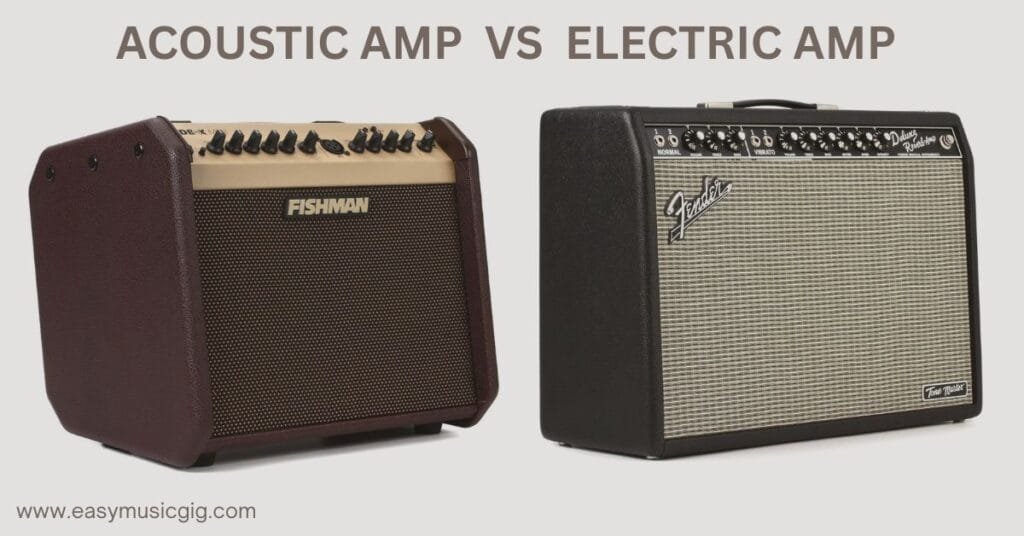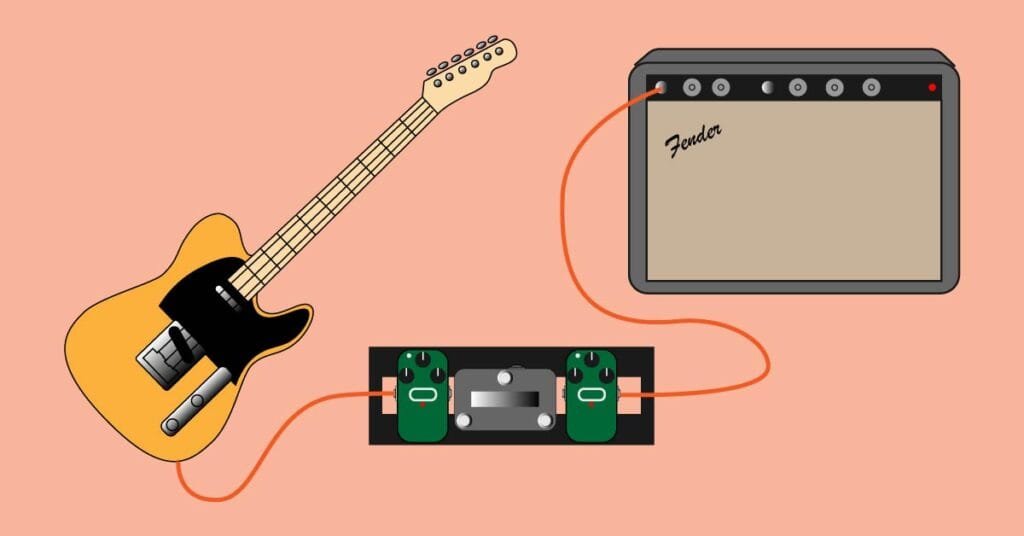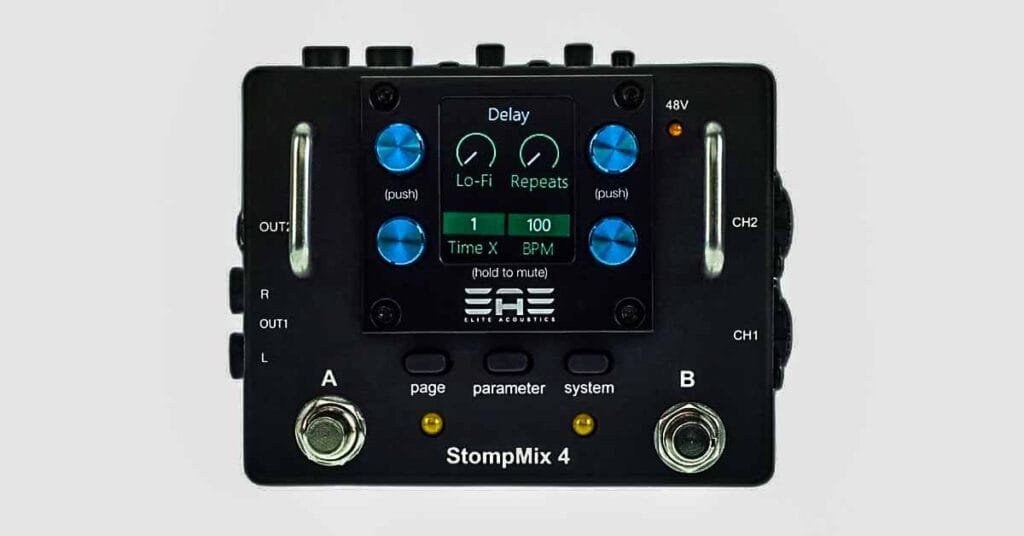What is the difference between an acoustic amp and an electric amp?
Can I use an electric guitar amplifier for my acoustic guitar? Well, a long time ago, I went further and played a couple of gigs with my vintage Dynacord Twen valve amp and Allen & Heath Wizard WZ16:2 mixer. I plugged my acoustic and mic into the mixer and the mixer’s left main out into the amp. It worked, not perfectly, but at the time, it made it possible to play the gigs until I bought some other stuff.
The first thing you may think is: The acoustic guitar just needs to be louder, like an electric guitar. That is true, but only partially. An acoustic amp is designed with a different goal than an electric amp. Let’s see how.
The main difference
Both amplifiers make guitars louder, but they have different purposes. Normal amps (electric) are built to color and alter your electric guitar’s sound. An electric amp adds warmth, overdrive, and other characteristics to electric guitars, which, without an amp, don’t have them.
Acoustic amps, on the other hand, are designed to reproduce the natural sound of your unplugged acoustic guitar. That is their main goal. They produce plenty of headroom without distortion.
Frequency response
Acoustic guitars produce a wider frequency range than electric guitars. They are known for their characteristic high-end frequencies, which are harder to tame in a live situation. That is why most acoustic amps and preamps have an anti-feedback and notch filter feature. Acoustic amps are made to maintain those high frequencies as clearly as possible.
Electric guitar amplifiers do not need those high frequencies in the same way, so they are made to roll them off. Mid-range controls may be present in both amp types, but they work with different frequencies that are typical for each instrument. Acoustic amps with mid-range frequency control often offer a parametric feature. In one case, you may want to emphasize a certain mid-frequency, but in another case, try to eliminate a certain frequency that is causing boominess.
Speaker and cabinet differences
Electric guitar amplifiers are designed to color the sound of an electric guitar. Every electric amp gives the same electric guitar a different, characteristic tone. Speakers in electric amps are especially designed for this. Many electric amp manufacturers even offer customization with several speakers to choose from. The cabinet in these amps follows the same principles. Different wood materials are used for electric amps.
Speakers in acoustic guitar amplifiers are usually full-range type speakers or have larger woofers with smaller tweeters that are tweakable for a more customized wide-range frequency response. Acoustic guitars produce natural harmonics, which need to be preserved in the amp’s sound. The cabinet construction of an acoustic amp, like an electric amp, is made to emphasize what is important for its instrument. For acoustic guitars, clarity is what we are looking for in an amp. Many acoustic amps are also used with keyboards and other acoustic instruments.
Input and output features
Electric guitar amplifiers only have an input for your electric guitar. Usually, for live use, we use a microphone to capture its tone for the soundboard. Only special amp types have XLR DI outputs.
Acoustic guitar amplifiers typically offer inputs for your acoustic guitar and vocals. This is possible because the human voice is an “acoustic instrument”. These amps usually have two separate channels with dedicated effects. Modern acoustic amps can also have aux inputs for backing tracks, loopers, and Bluetooth connectivity features.

The guitar output on an acoustic amp is always a DI XLR output. If the amp has a vocal input, it will almost always have separate outputs for acoustic guitar and vocals. Some acoustic amps have combined outputs for guitar and vocals as well as clean outputs with no effects for the mixing board or recording interface. This way, you can use the amp as your personal on-stage monitor.
Final thoughts
While it is possible to plug an acoustic guitar into an electric amp, it will lose its natural character due to the speaker and cabinet design, as well as built-in electronics. Whatever you add in between won’t make the sound much better. On the other hand, I find that plugging an electric guitar into an acoustic guitar amp works much better, especially when using a DI box or cab sim. That is actually what I do when playing solo acoustic gigs, where I play a couple of songs on my electric guitar per set.
An acoustic guitar amp is made to preserve the woody, natural sound of your acoustic guitar. It should not color your guitar’s sound, only make it louder. The big advantage of an acoustic amp for acoustic guitarists who sing is that it is designed for your voice as well, making it an ideal all-in-one solution for solo acoustic gigs.



